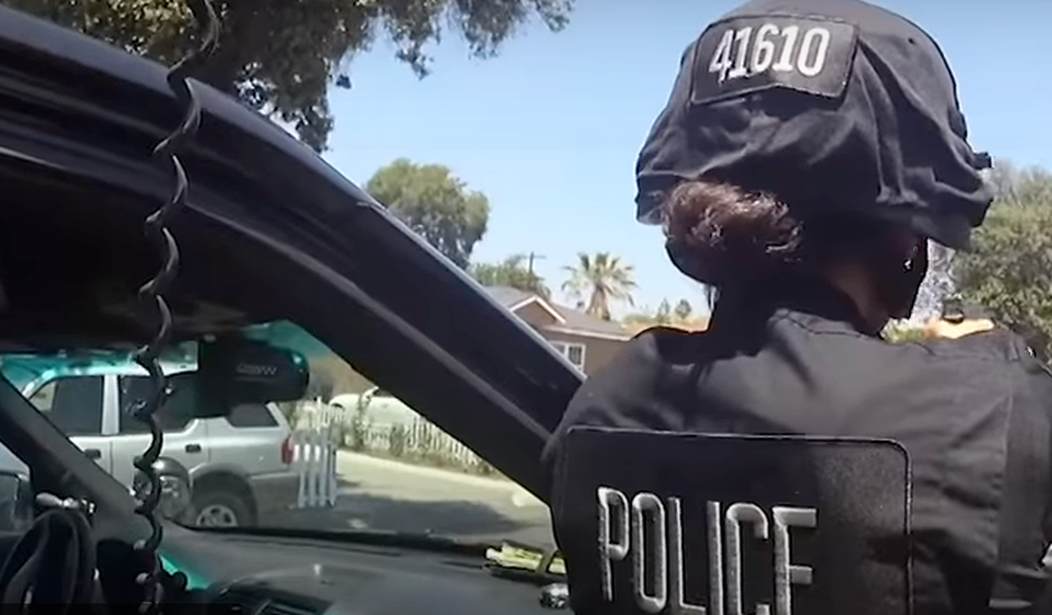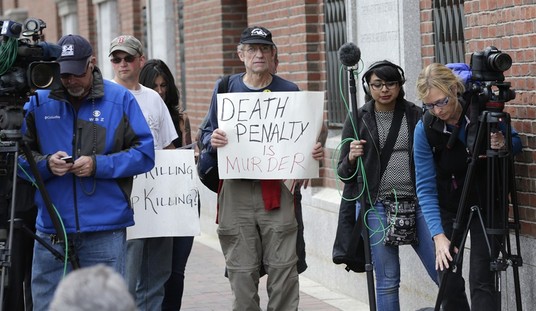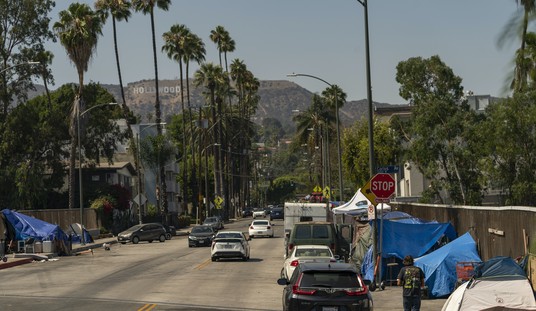The Los Angeles Times has been leftward-leaning for decades, but there was a time not long ago when it tried to maintain a veiled pretense of objectivity, even if the veil was sometimes all but transparent. Now, the veil has been abandoned altogether in favor of outright activism, even in front-page, above-the-fold stories in which the activism masquerades as news. In no arena has this been more evident than in the paper’s coverage of law enforcement issues, most especially those involving the Los Angeles Police Department.
The most recent example is a story that ran on the front page of Sunday’s edition under the headline “Officers, critics split on ‘edged weapons’ threat.” Only a cursory knowledge of the Times’s history of bias is required to know which side of this split the paper finds more credible. Indeed, the story is an example of the Times’s formulaic response to police controversies.
Times staff writer Kevin Rector, a reliable practitioner of the craft, opens with a dramatic scenario, this one involving officers responding to a radio call that ended in the death of a man described as mentally ill. It goes on, following the formula, to list the perceived errors committed by the officers in dealing with a man who, because he was mentally ill, presumably should not have been shot and instead been given leeway to further menace his neighbors and the police themselves.
And the formula would not be complete without the mournful tales from the deceased’s family members (who coincidentally will benefit if they prevail in a pending civil suit) extolling his peaceful nature and lamenting the death of a man who “just needed help.” As usual, the family’s failure to provide or even seek that help prior to the fatal encounter goes unaddressed.
Related: Cops Don’t Have a Pause Button
The May 2020 incident involved Rommel Mendoza, a 50-year-old resident of North Hollywood, in L.A.’s San Fernando Valley. Rector writes that Mendoza “had hit a neighbor’s car with a stick,” prompting the neighbor to call police. But in studying the Times’s formula, it’s important to examine not only what is included in the story but also what is left out. In so limiting his description of the reason for police response, Rector allows the reader to infer the threat Mendoza posed was trivial. But the LAPD video of the incident includes a recording of the 911 call, which provides additional, more ominous details about Mendoza that Rector omits, and which are not captured in the edited version of the video accompanying the online version of his story.
Body camera footage shows the first two officers on the scene going to the backyard of a home, where Mendoza lived in a separate rear unit. When Mendoza comes outside he can be seen holding a large, curved sword, something of a cross between a machete and a scimitar. The officers immediately retreat to the street and radio for backup, which soon arrives in the form of a dozen or so officers and a helicopter.
After some minutes, Mendoza comes out to the street, still armed with the sword, and advances toward the assembled officers. After Mendoza ignored repeated commands to stop and drop the sword, an officer fired a single rifle shot, fatally striking him in the chest.
In criticizing the Times’s story, I do not mean to imply that the incident was a textbook example of how such an incident should be handled. It wasn’t. The investigation determined Mendoza was 77 feet away from the officer who fired, more than twice as far as the officer estimated in his interview with investigators. And, as the video shows, the officer fired his rifle nearly simultaneously with one who fired a foam projectile at Mendoza. There was no opportunity to assess what effect the foam round may have had, if any. Ideally, more less-lethal rounds should have been fired before resorting to lethal force, as the chief of police and the police commission ruled in their evaluation of the incident.
But while it is reasonable to argue Mendoza did not present an imminent threat to the officers from a distance of 77 feet, it is also reasonable to argue he in all likelihood would have continued advancing until lethal force was the only option. Perhaps more importantly, and contra the L.A. Times’s implication that it’s always better to wait before using deadly force, it is also reasonable to argue Mendoza should have been shot much earlier, shortly after emerging from his home.
Related: The Sound Behind You Is Reality Catching Up (and It’s Carrying a Gun)
Consider: in making their hasty retreat from the yard, the officers left anyone else in the vicinity to Mendoza’s clearly unpredictable whims, including any other occupants in Mendoza’s home and anyone in the front house, presumably to include the woman who called the police. And the officers retreated not just to the street but to a position several houses down the block, potentially jeopardizing any neighbors who, drawn by the commotion or unaware of it, happened to wander outside.
Indeed, one such person can be seen coming into a front yard and lingering for a moment before the officers directed him back inside. Had Mendoza been nearby, the officers would have been too far away to prevent him from attacking the person. Compare this to an incident I described two years ago, when LAPD officers hesitated in shooting a man behaving erratically while armed with a knife. By the time they fired, the suspect was attacking a woman bystander, who was also shot and killed in the confusion. There can be a heavy price paid not only for hasty decisions but also for inordinately delayed ones.
Another incident described in Rector’s story was one involving the death of Samuel Ponce, who in March of this year was shot and killed by police after threatening passersby with a hammer. Despite the presence of numerous police officers, Ponce was allowed to ignore their commands and meander for several blocks, jeopardizing who knows how many pedestrians and motorists on and near Wilshire Boulevard, one of the city’s busiest commercial streets, before he was finally confronted and shot. Had Ponce attacked a bystander, would anyone at the L.A. Times have dared criticize the officers’ prolonged inaction?
But none of this matters to the keyboard sages at the Times, who can be counted on to find fault in almost any police encounter that results in death or injury to anyone but a police officer. This is especially so when the injured party is said to be mentally ill, the definition of which can be so elastic as to encompass nearly anyone behaving in such a way as to bewilder an onlooker. According to the Times, anyone perceived as being mentally ill, even after the fact, should be given great deference before an officer is allowed to defend himself or innocent third parties from danger.
No, the Mendoza shooting was not a textbook example of proper procedure, but in the real world, the world the Los Angeles Times seldom explores, no shooting ever is.










Join the conversation as a VIP Member